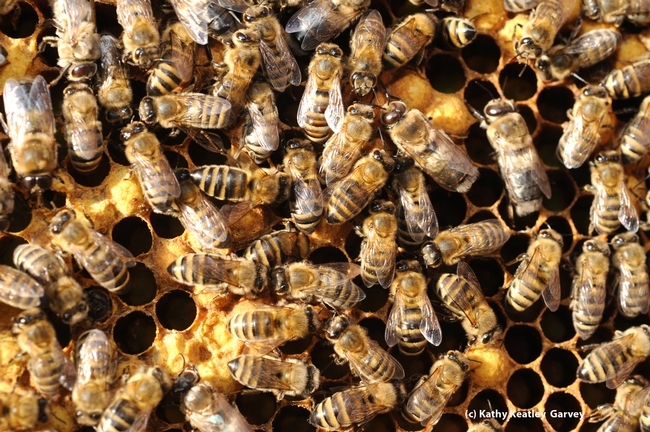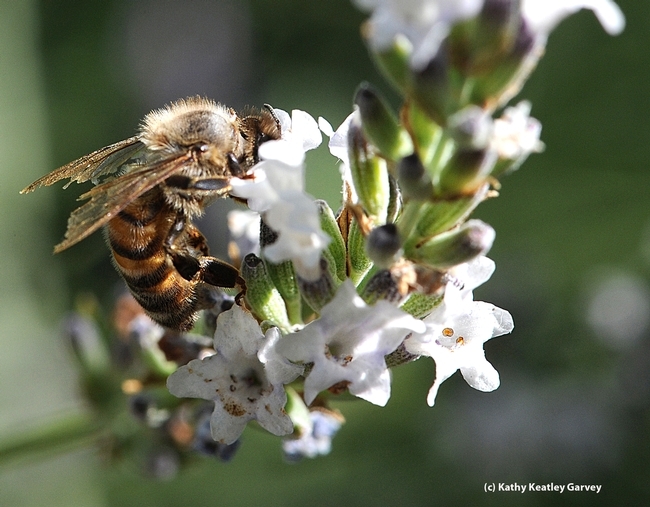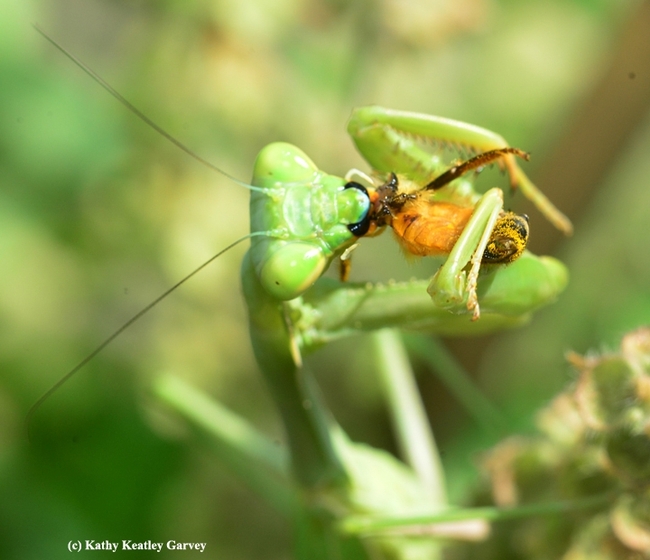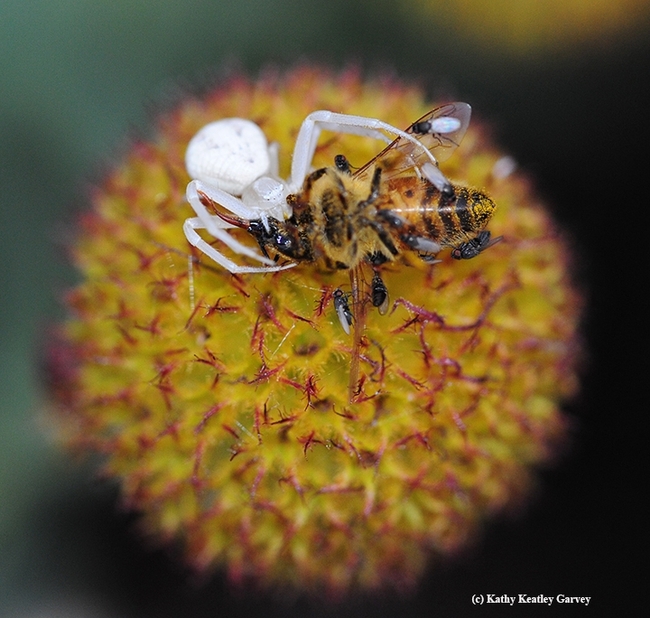On Labor Day, a federal holiday, we celebrate the our country's labor movement, our gratitude, and our achievements.
But there is no Labor Day holiday for the worker bee, one of three castes (queen, worker and drone) in a honey bee colony. No Labor Day holiday for the queen, either. In peak season, she will lay from 1000 to 2000 eggs a day. A laborious task, to be sure.
Most will be worker bees, the most needed of the three castes. Worker bees perform such age-related duties as nurse maids, nannies, royal attendants, builders, architects, foragers, dancers, honey tenders, pollen packers, propolis or "glue" specialists, air conditioning and heating technicians, guards, and undertakers. The worker bees (sterile females) run the hive. They're the "you-go" girls, the "you-got-this" girls and the "go-to" girls.
No "atta boys" here. The boys, or drones, have one job to do: mate with a virgin queen (in flight) and then they die. (Or as the late Eric Mussen, UC Extension apiculturist emeritus and a longtime member of the UC Davis Department of Entomology and Nematology faculty, would add "They die with a smile on their face.")
It's a matriarchal society.
But life is short for the foraging worker bees.
"Worker bees live for approximately five to six weeks in the spring and summer," writes author and retired bee scientist and bee wrangler Norman Gary, emeritus professor of entomology at the University of California, Davis, in his book, Honey Bee Hobbyist: The Care and Keeping of Bees.
"Those reared in the fall live for several months--long enough for the colony to survive the winter--and are replaced by young bees in late winter or early spring," says Gary, whose entire apicultural career spans 75 years, from student to retirement 26 years ago. (He still works with bees.)
For the foragers, collecting nectar and pollen can be dangerous. Their searching expeditions and forays can take them four to five miles from their hive. Due to predators (including birds, praying mantids and spiders), pesticides and other issues, many do not return home at night.
They put the "severe" in persevere.
What's not to admire about the honey bee? All hail Apis mellifera, not just on Labor Day, but every day of the year. You go, girls! You got this!
(Editor's Note: Interested in becoming a beekeeper or learning more about beekeeping? Be sure to check out the UC Davis-based California Master Beekeeper Program, directed by Extension apiculturist Elina Lastro Niño of the UC Davis Department of Entomology and Nematology.)
Attached Images:

Worker bees are aptly named. They comprise most of the bees in the colony and do most of the work. (Photo by Kathy Keatley Garvey)

This aging worker bee is all tattered and torn. (Photo by Kathy Keatley Garvey)

Foraging can be dangerous. Here a praying mantis has just nabbed a worker bee. (Photo by Kathy Keatley Garvey)

A crab spider feeding on a honey bee. Crab spiders are ambush predators. (Photo by Kathy Keatley Garvey)